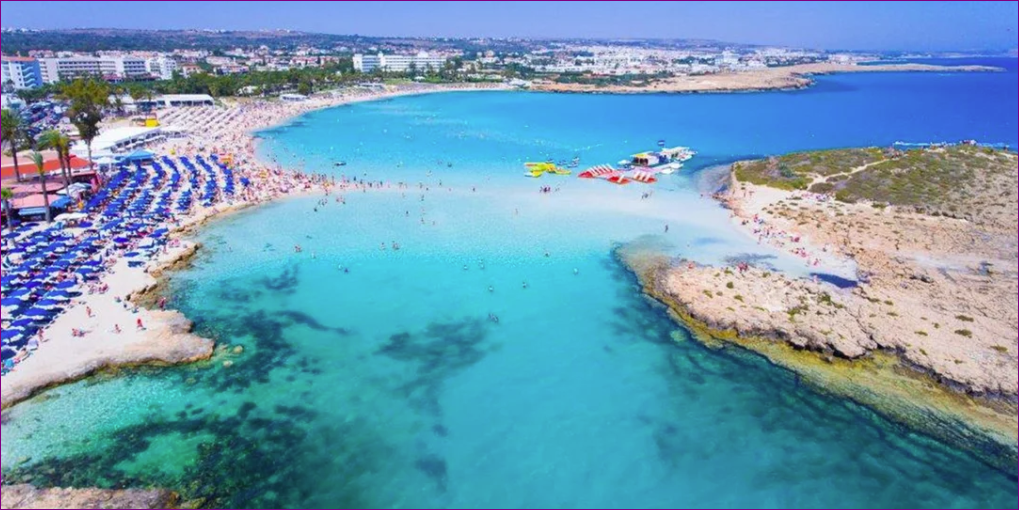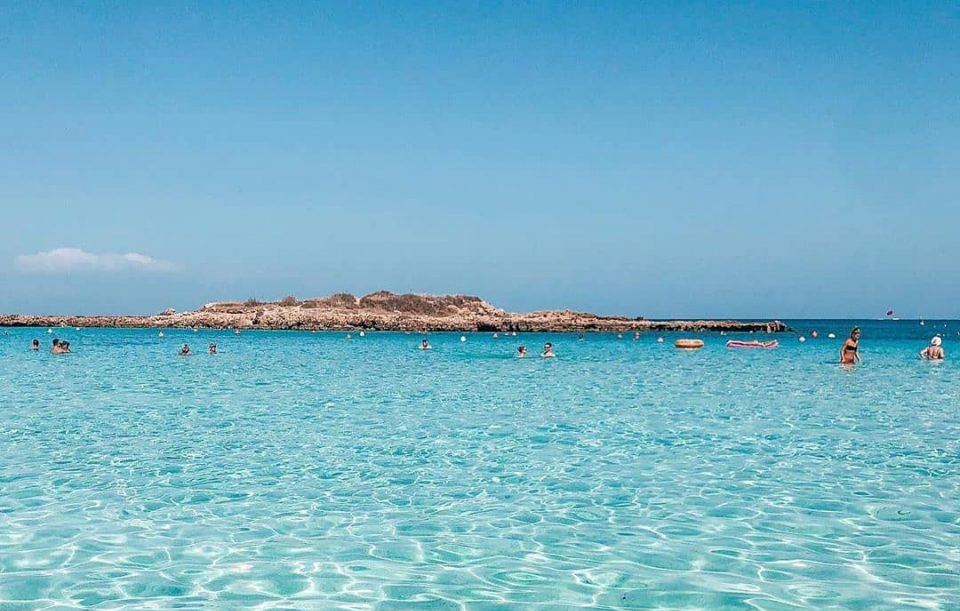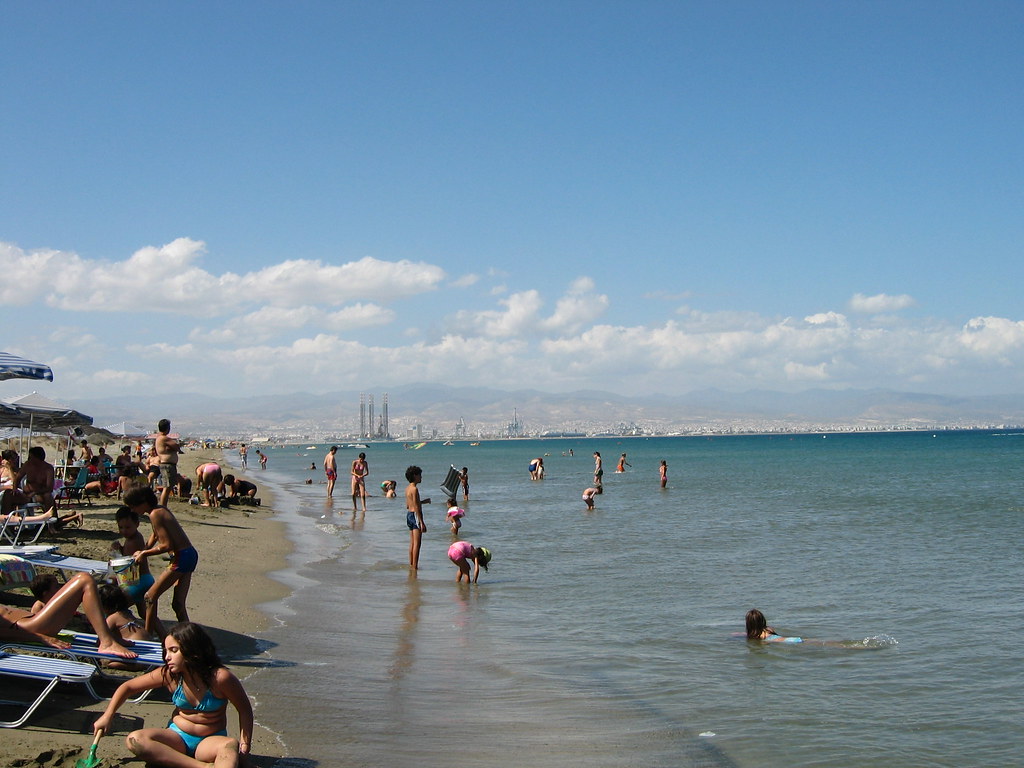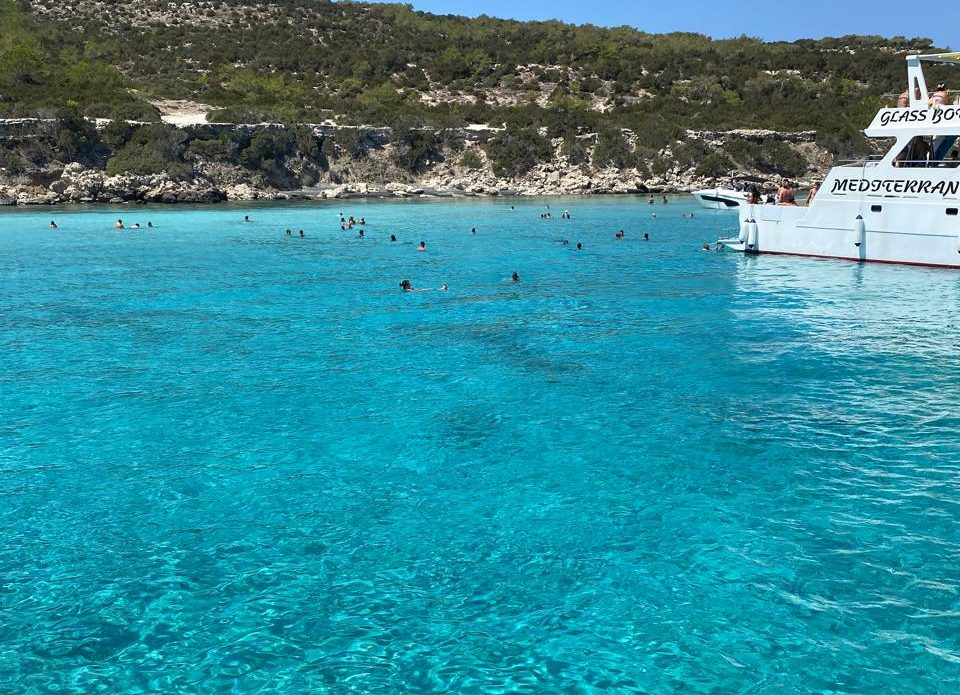Cyprus has a coastline that changes character every few kilometres. From the sugar-soft sands of the east to the wild coves of the west, every stretch of shore tells a different story. Some beaches pulse with music and energy; others whisper in turquoise silence. Together, they form one of the Mediterranean’s most captivating mosaics of sea and sun.
Ayia Napa & Protaras – Eastern clarity and energy

Few places capture the island’s summer spirit like the east coast. Nissi Beach in Ayia Napa is Cyprus’s most famous shoreline — a crescent of white sand where shallow waters glow turquoise and the music drifts across beach bars and parasols. It’s lively, photogenic, and distinctly Mediterranean.
For something quieter, head to Makronissos Beach, a series of smaller coves framed by golden dunes and crystal-clear water, or Konnos Bay, nestled below the cliffs of Cape Greco National Park. Here, pine trees lean over translucent shallows, and the atmosphere feels almost secret — perfect for swimming, snorkelling, or simply floating under the cliffs.
In Protaras, Fig Tree Bay is a masterpiece of clarity — its shallow lagoon fringed by a tiny islet you can reach by swimming. Early mornings reveal a serene side before the day’s buzz begins, making it one of the most beloved beaches for both families and couples.

Larnaca – Easygoing Shores
The beaches of Larnaca are all about accessibility and relaxed charm.
Finikoudes Beach, right in the heart of the city, offers golden sands lined with palm trees, cafés, and a calm sea perfect for swimming. Nearby, Mackenzie Beach brings a livelier atmosphere, with trendy bars and restaurants that stay open long after sunset.
For a more natural experience, the Alaminos beach just west of the city remains delightfully low-key — ideal for long walks and quiet dips in the shallows.
Limassol – Urban sands and family spots
Cyprus’s largest coastal city combines seaside living with cosmopolitan flair. Lady’s Mile Beach, stretching for several kilometres west of the marina, offers soft sands, shallow water, and space to spare — ideal for families and kitesurfers alike.
In contrast, Governor’s Beach, east of Limassol, is a photogenic mix of white rocks and dark sand, with crystal water lapping against sculpted limestone cliffs.

Locals also head to Curium Beach, below the ancient city of Kourion, where you can swim beneath the ruins of a Roman theatre — one of the island’s most dramatic coastal settings.
Paphos & the west – Wild beauty
The west coast offers rugged beauty and mythology in equal measure. Just east of Paphos lies Petra tou Romiou (Aphrodite’s Rock), said to be the birthplace of the goddess of love. Though not a swimming beach, it’s an unforgettable spot for sunrise or sunset, with waves crashing against the iconic limestone stack.
For actual swimming, Coral Bay in Peyia combines easy access with excellent facilities, golden sands, and calm, sheltered water. Farther north, Lara Bay is the opposite — wild, remote, and part of the Akamas Peninsula Nature Reserve. Reached only by 4×4, it’s one of the few nesting sites for loggerhead and green turtles.

Beyond Akamas, the coast from Latsi to Pomos reveals secluded coves and hidden inlets — perfect for those seeking solitude and natural beauty.
When to go
Cyprus enjoys one of the longest beach seasons in Europe. Swimming is possible from April to November, with the sea often warm enough even in late autumn. July and August bring heat and crowds; May, June, and September strike the perfect balance of weather and space.
Why go
Whether you’re seeking serenity, adventure, or a splash of Mediterranean glamour, Cyprus delivers variety like few other islands. From the lively sands of Nissi to the empty horizons of Pomos and Pyrgos, every beach tells a different story — one written in salt, light, and the endless rhythm of the sea.
IMPORTANT: These featured beaches are only a glimpse of the countless treasures this region has to offer
To explore more of Cyprus:
Unearthing Cyprus: Walking through 10,000 years of history
Paphos: Where myth, history and the sea meet
Aphrodite’s Rock: The heart of Cyprus’ coastal magic
Nicosia: Inside Europe’s last divided capital
From flamingos to Finikoudes: Fall in love with Larnaca
Limassol: The Mediterranean city that has it all
Protaras – Cyprus’s family-friendly coastal gem
Ayia Napa: Cyprus’s sun-drenched blend of buzz and beauty
Cyprus, but cooler: Why Troodos is the island’s best-kept secret







Click here to change your cookie preferences